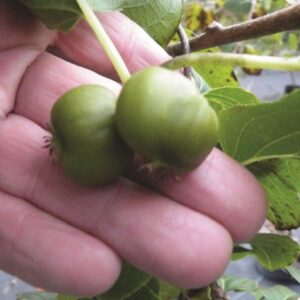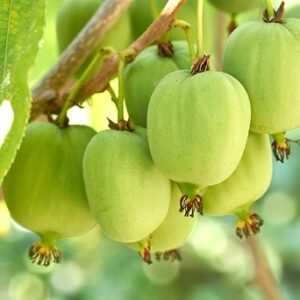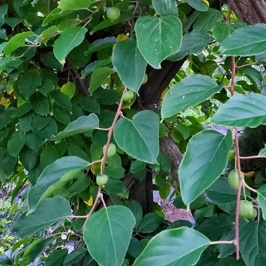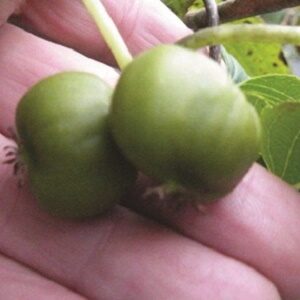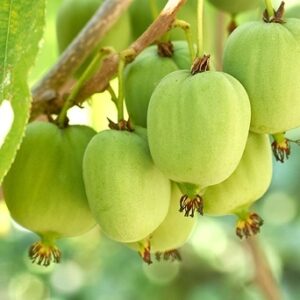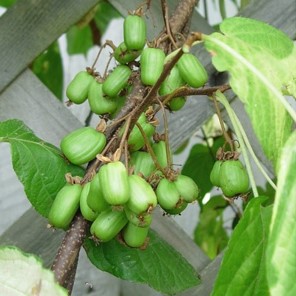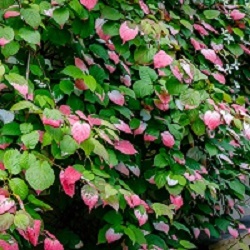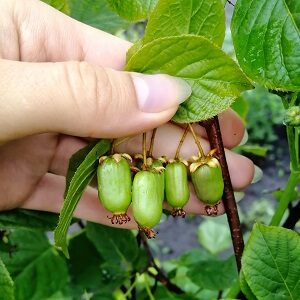SEARCH IN Kiwi
Search
Category
New Items!
Special Searches
Harvest
Zone
Rootstock
Pollenizer
Stock Status
Kiwi*
*Final Sale. No warranty or replacement policies on trees and plants purchased at clearance sale pricing.
(Actinidia spp)
Of the three main types of kiwi, by far the most common are the fuzzy brown ones which are grown primarily in New Zealand and can be found in supermarkets everywhere. Their smaller, smooth-skinned cousins, which are hardy enough to grow here in Canada are known as ARGUTA kiwi and KOLOMIKTA kiwi.
For many centuries the Chinese have been eating these hardy kiwi fruit which they harvest in the wild. When first introduced to North America in the early 1900’s they were planted mostly as ornamentals with their twining vines and attractive foliage. In more recent times, the savory, grapesized fruit has gained popularity as more people become aware of its existence.
Although kiwis grow well in shade, you will get more and bigger fruit with partial or even full sun, especially in more northern regions. Young plants should be well wrapped for several winters as they gain hardiness with maturity. Hardy kiwis have no significant pests or disease problems. You will need a non-fruiting male plant for pollination. One male can pollinate up to six females.
Arguta Kiwis
(Actinidia arguta)
Sparkling, emerald-green flesh, jam-packed with nutrients, especially vitamin C and covered with a smooth edible skin – Arguta kiwi fruit is super for snacking but can also be used in numerous other ways. Arguta kiwi vines are very vigorous and will grow rampantly over arbors or along fences. They do tend to take a little longer to begin bearing, but after 4-5 years they start getting serious about it. With a sturdy trellis and regular pruning Arguta can yield over 100 pounds of fruit per plant – real commercial potential here!
Plant 3-6 meters (10-20') apart.
Kolomikta Kiwis
(Actinidia kolomikta)
The kolomitka kiwi varieties are known to be hardy to -40C. Their highly decorative vines are more shade-loving and require less pruning since they are not as fast growing. They do start to bear earlier, sometimes in the second year. The fruit is smaller but starts to ripen earlier in the season and can be harvested continually over a longer time period.
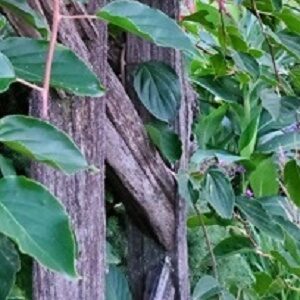
Arguta Kiwi : MEADER 2 year old vine (Male)
$25.95
